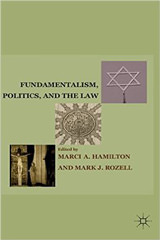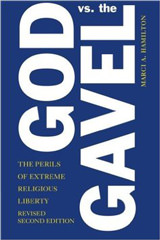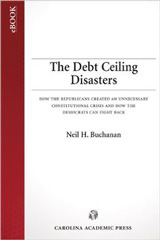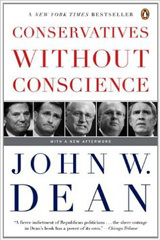Illinois Law dean Vikram David Amar and professor Jason Mazzone comment on a recent decision by the U.S. Court of Appeals for the Fourth Circuit involving the admissions policy at a school in Virginia. Dean Amar and Professor Mazzone argue that while it’s not clear whether the U.S. Supreme Court will review this case, the issue the case raises is likely to be one the Court takes up soon.
Illinois Law dean Vikram David Amar and UC Davis emeritus professor Alan E. Brownstein comment on a case before the U.S. Supreme Court that raises the question whether a religiously neutral student-aid program in Montana that affords students the choice of attending religious schools violates the religion clauses or the Equal Protection Clause of the U.S. Constitution. Amar and Brownstein express no opinion as to whether the courts’ often-expressed concerns about striking down invidiously motivated laws can be effectively overcome, but they contend that jurists who reject invalidating invidiously motivated laws must explain why reasons sufficient in other contexts are not persuasive in this case.
SMU Dedman School of Law professor Joanna L. Grossman and Duke law professor Katharine T. Bartlett explain why a public school district in Texas violated both the federal Constitution and Title IX by having (and enforcing) a hair-length policy for boys but not for girls. Grossman and Bartlett describe the facts of the case and the legal landscape for sex-specific dress and appearance policies before concluding that the school district’s decision to enforce the policy was not only poor judgment but illegal.
Cornell law professor Michael C. Dorf comments on a recent decision by a federal district court judge in Texas declaring unconstitutional the US’s male-only military draft. Dorf points out that the judge’s decision defies the Supreme Court’s admonition that federal court judges should follow even outdated Supreme Court precedents, “leaving to th[at] Court the prerogative of overruling its own decisions” and considers whether there is any other reason that admonition should not apply.
Illinois Law dean Vikram David Amar and professor Jason Mazzone continue their discussion of the constitutionality of California’s law requiring that publicly held corporations have a minimum number of women on their boards of directors. In this second of a series of columns, Amar and Mazzone consider whether California’s ostensible reasons for enacting and implementing SB826 are permissible and “important”—the standard required under federal intermediate equal protection scrutiny.
Illinois Law dean Vikram David Amar and professor Jason Mazzone consider the constitutionality of California’s recently passed law requiring that publicly held corporations to have a minimum number of women on their boards of directors. In this first of a series of columns on this topic, Amar and Mazzone analyze whether, under the Equal Protection Clause, the law fails federal intermediate scrutiny.
Chapman University Fowler School of Law professor Celestine McConville considers whether the US Supreme Court’s decision in Trump v. Hawaii establishes a new equal protection rule regarding when the presence of government animus will invalidate government action. McConville points out that under Trump, a stated nondiscriminatory justification will outweigh demonstrated animus, provided the means are “plausibly related” to that justification—a bar so low, she argues, it does a disservice to the integrity of equal protection doctrine.
Cornell University law professor Michael C. Dorf considers whether, in protest of the Supreme Court’s recognition of the constitutional right to same-sex marriage, states can “get out of the marriage business” altogether. Dorf explains that abolishing marriage for everyone likely poses no equal protection issues, and points out some interesting and unique characteristics about marriage as a fundamental right.
SMU Dedman School of Law professor Joanna L. Grossman comments on the U.S. Supreme Court’s recent decision in Sessions v. Morales-Santana, in which the Court held unconstitutional a federal law imposing different physical presence requirements on mothers as compared to fathers. Grossman argues that the law at issue epitomized sex discrimination and was rooted in archaic generalizations about parents based on gender.
Cornell University law professor Michael C. Dorf comments on a recent decision by the U.S. Supreme Court on the heritability of citizenship and explains why the decision might have implications for other immigration issues, such as the “Muslim ban” executive order. Dorf argues that the precedents the Court had to distinguish to reach its conclusion might give some insight into whether and how it might defer to other political branches on immigration issues.
Hofstra University law professor Joanna L. Grossman and Duke law professor Katharine T. Bartlett explain why a high school policy prescribing one color of robes for boys and another color for girls violates both the Equal Protection Clause of the Fourteenth Amendment and Title IX. Grossman and Bartlett describe how this controversy could be easily resolved, as other schools have resolved other similar controversies.



































